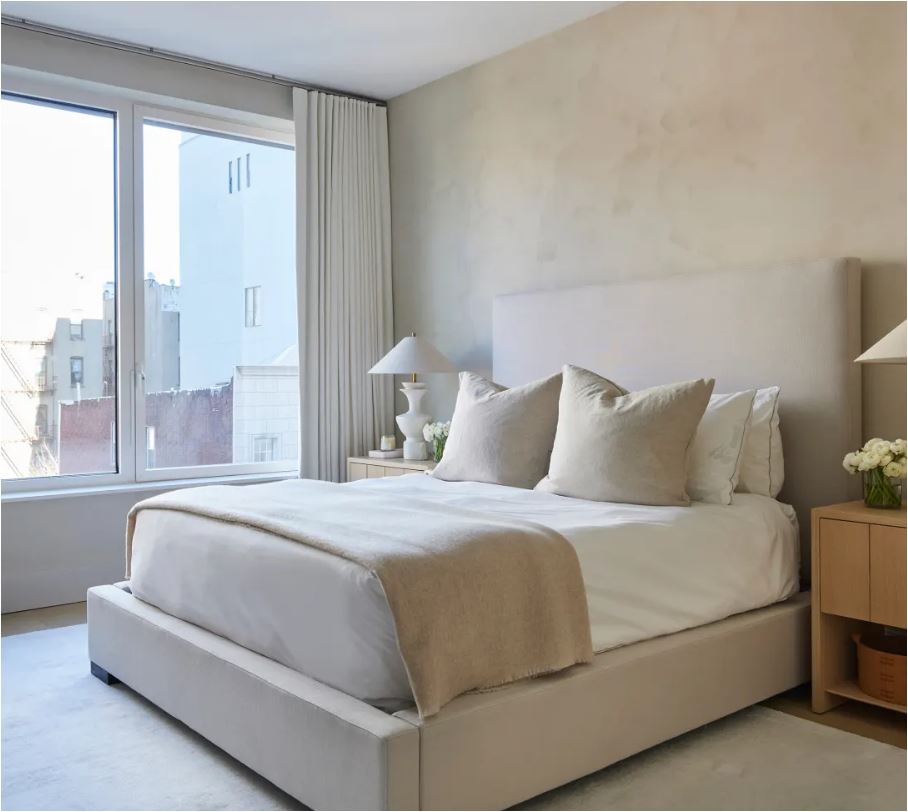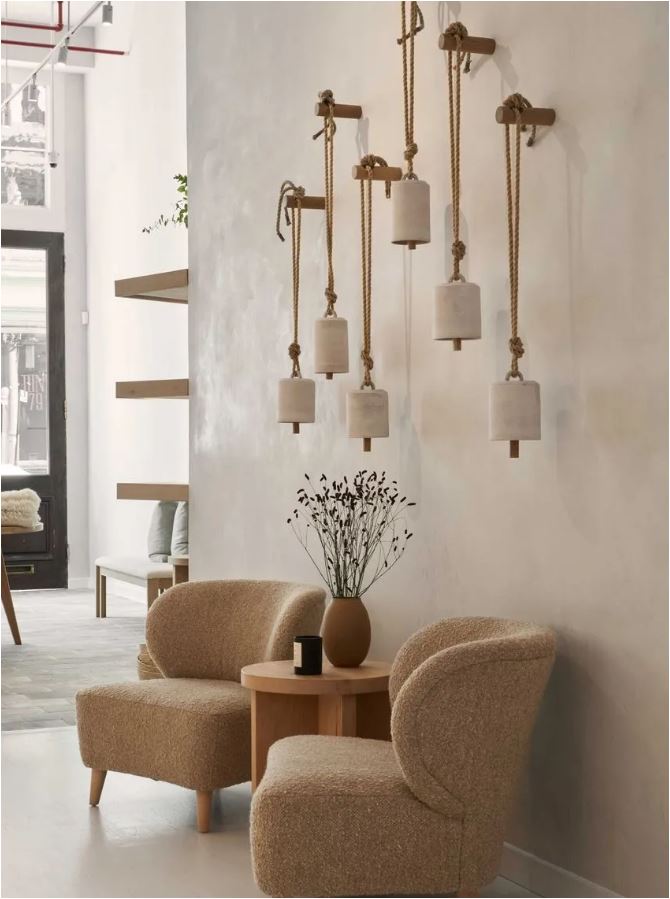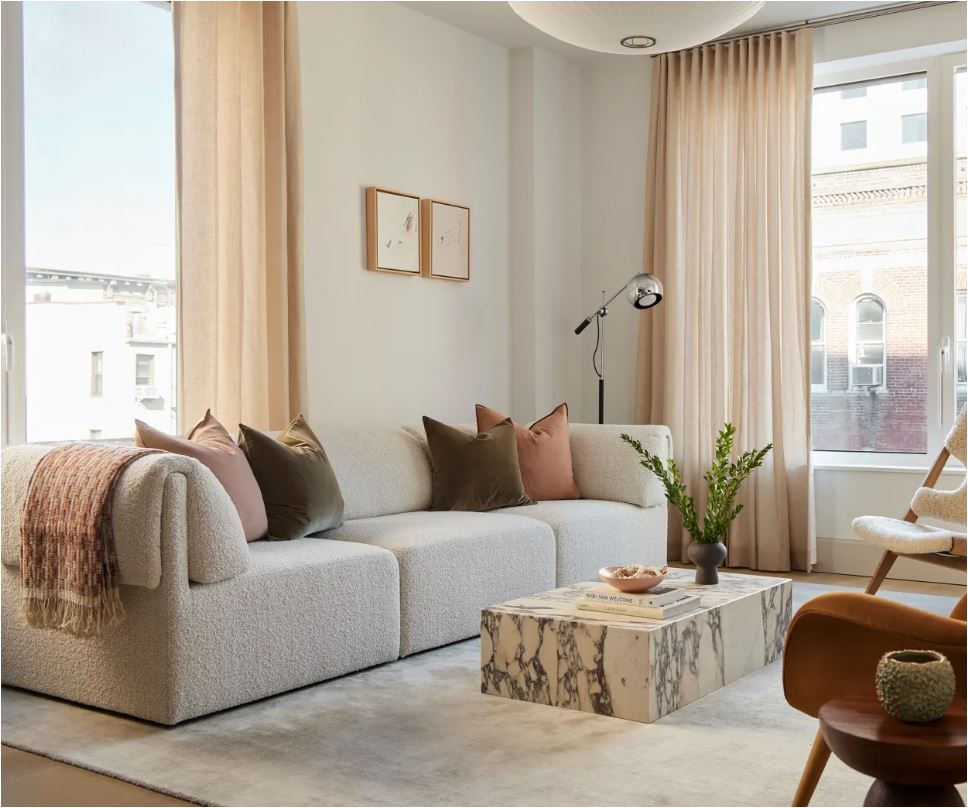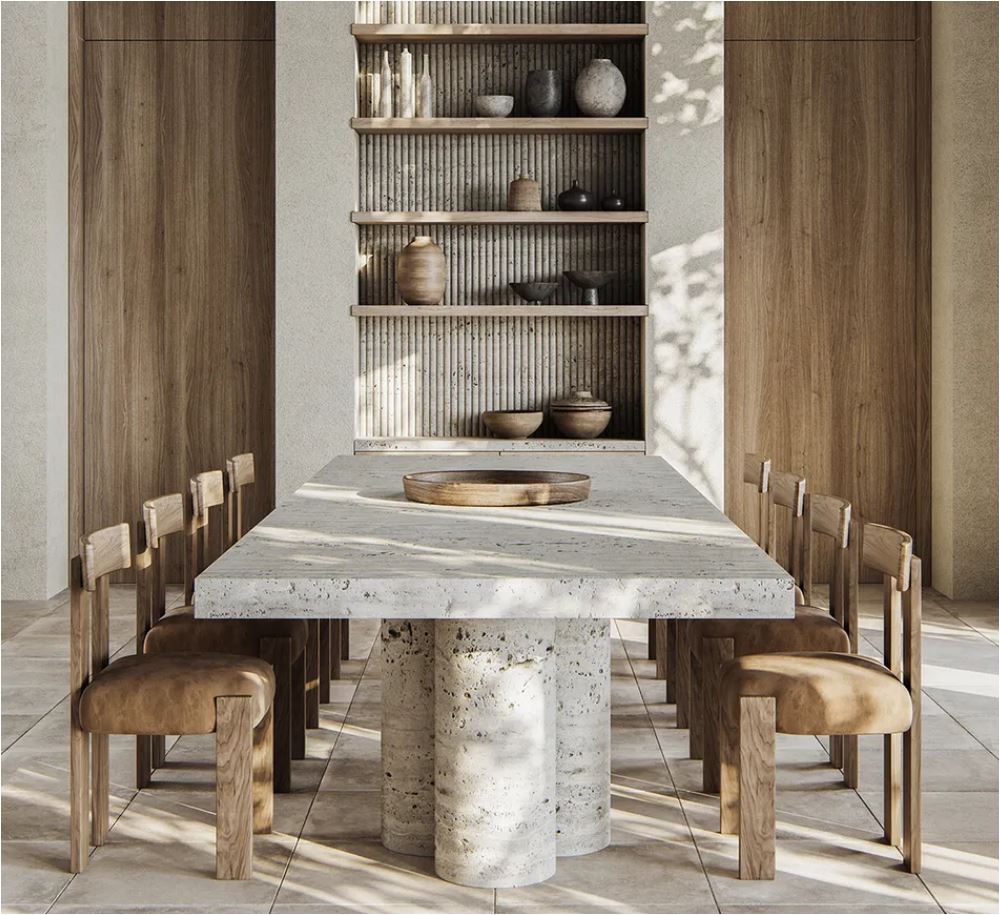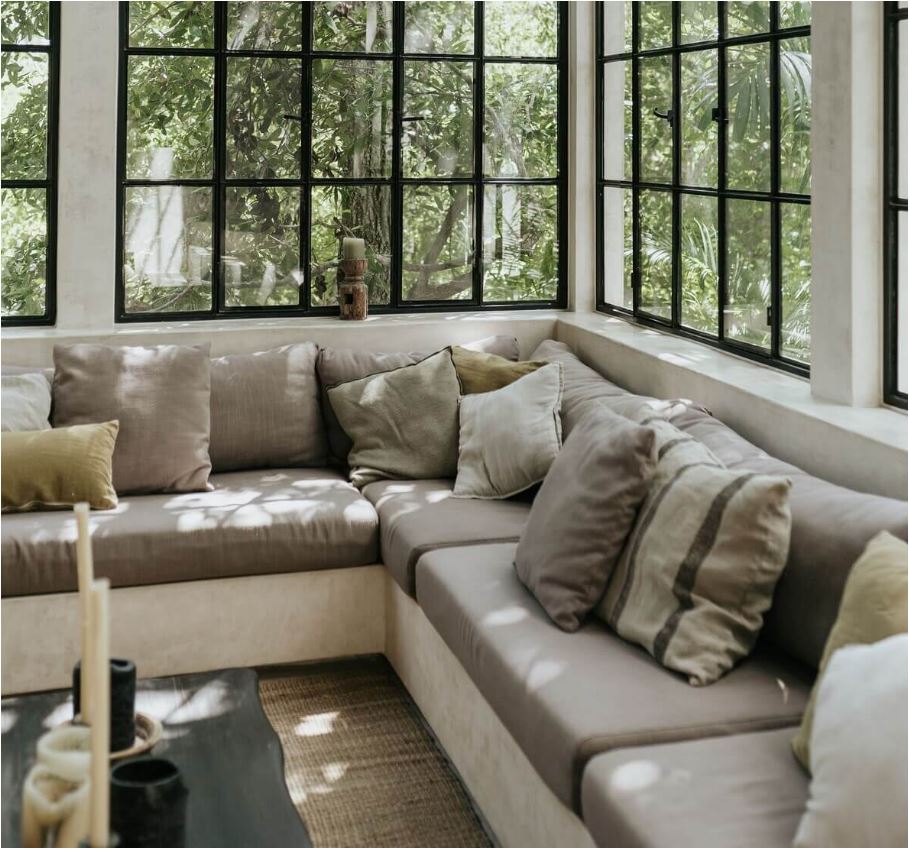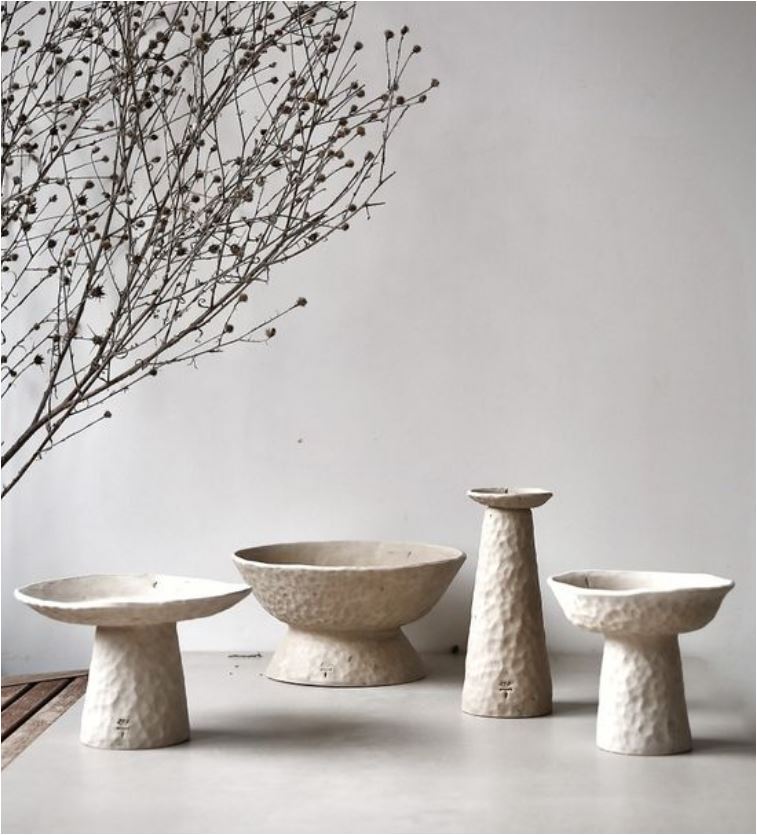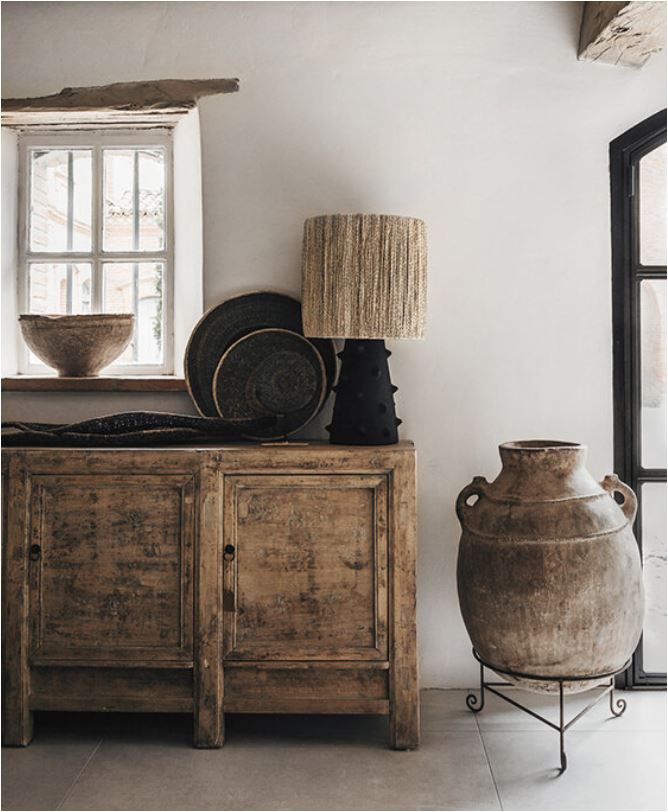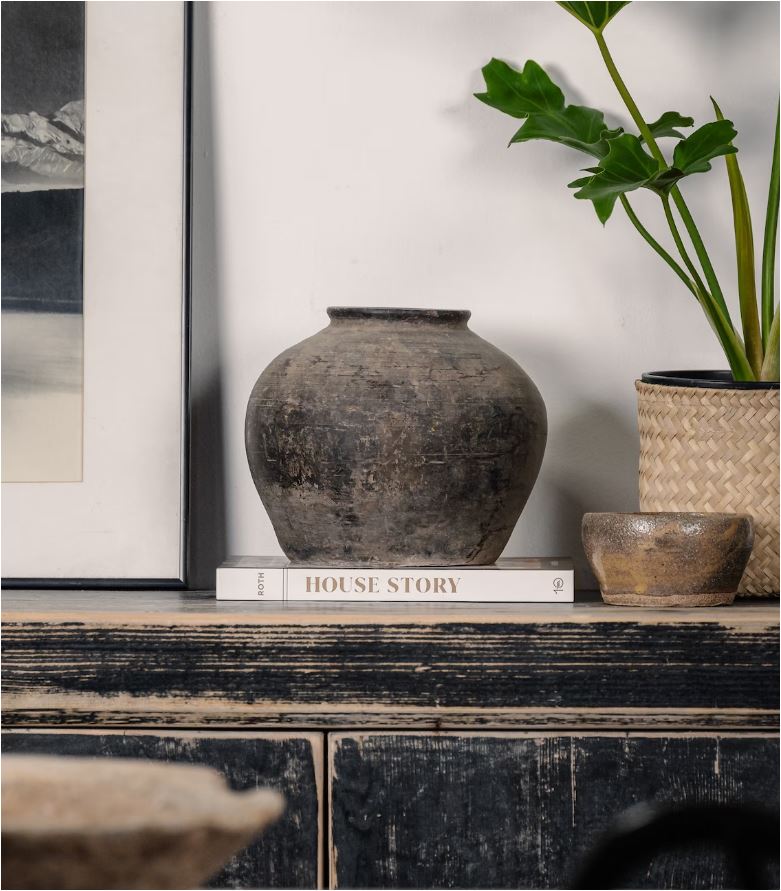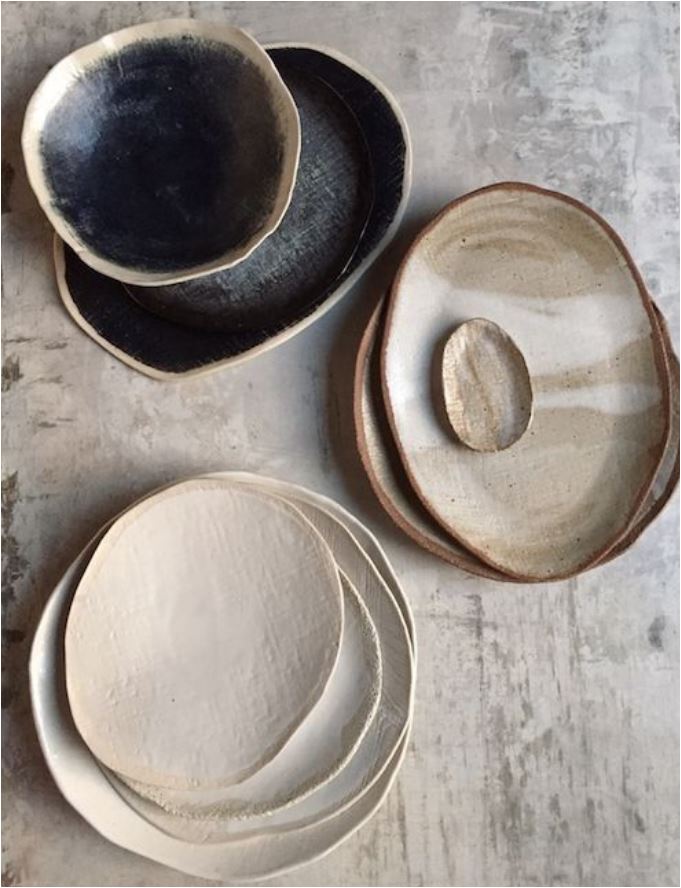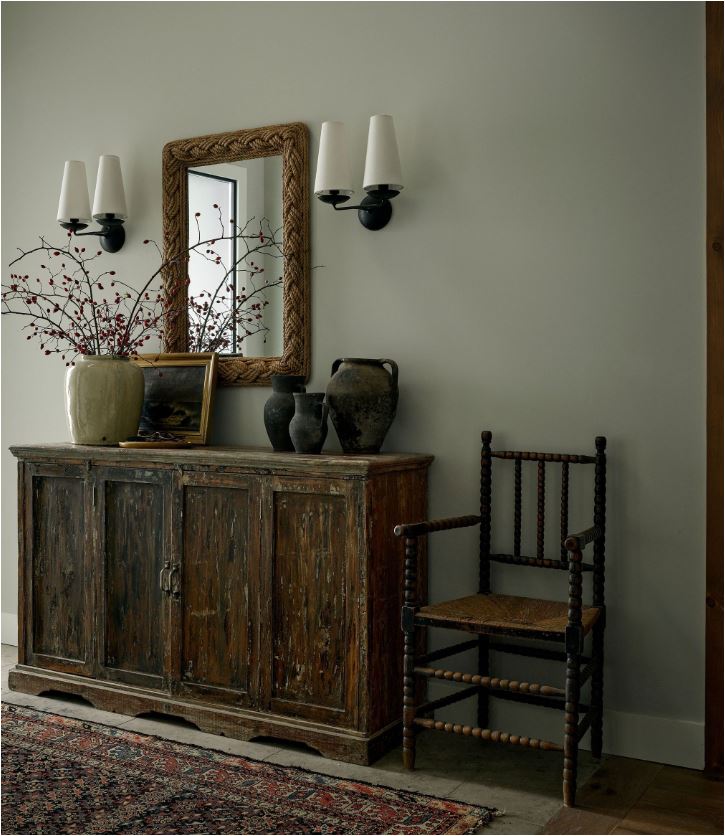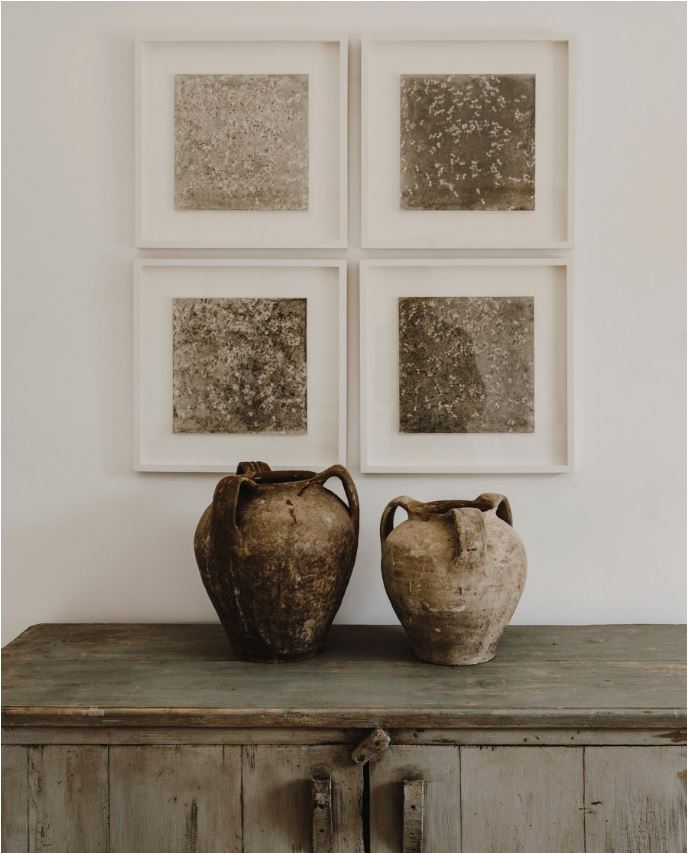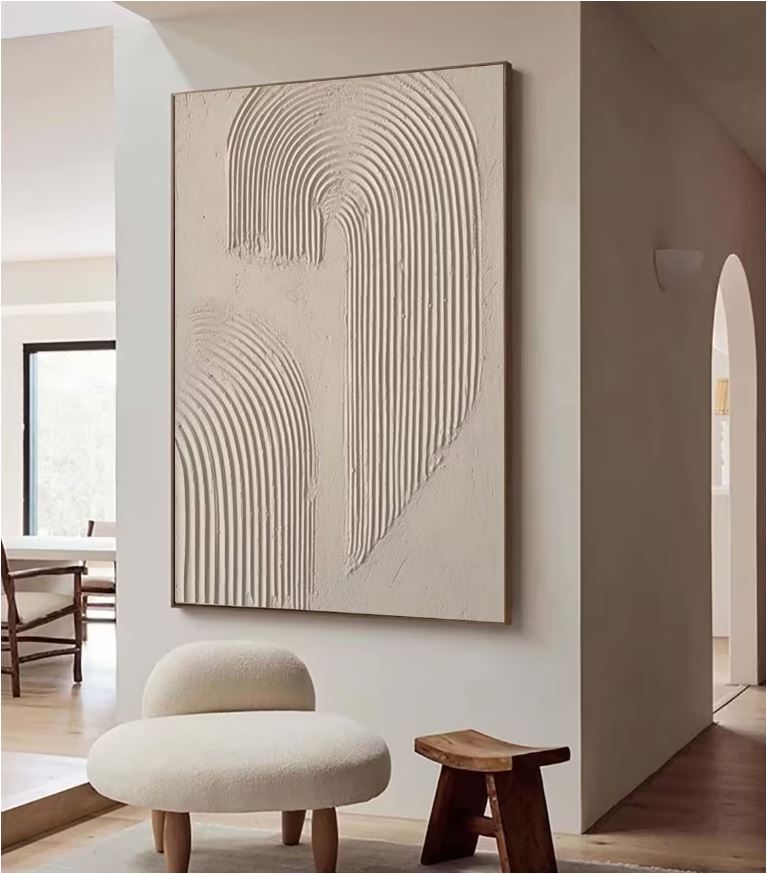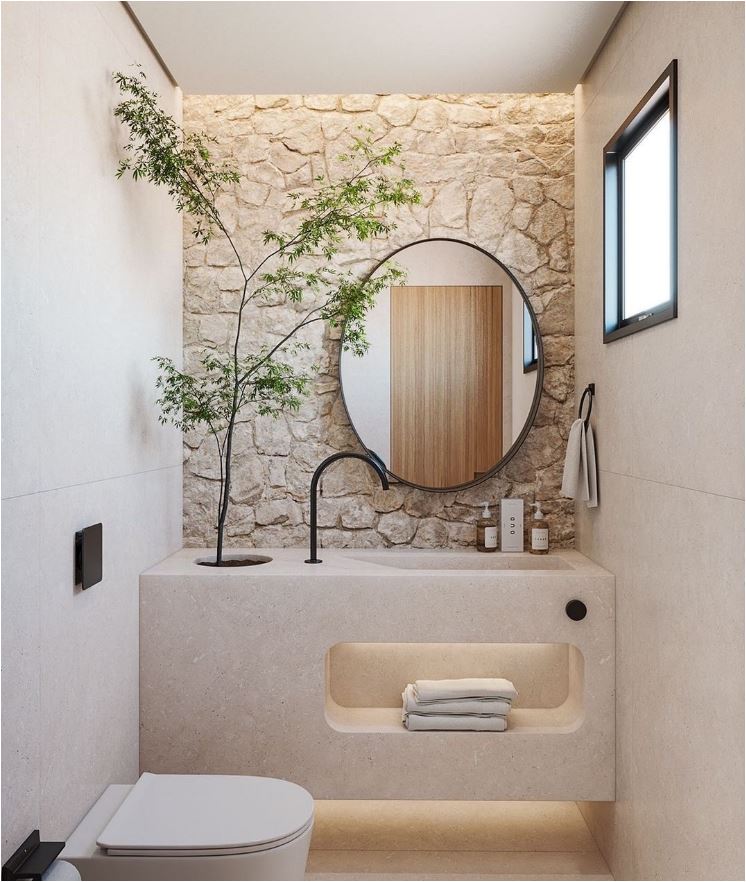The term ‘wabi sabi’ does not have a direct English translation, but a Japanese aesthetic rooted in tradition. The word ‘wabi’ refers to harmony and serenity, while ‘sabi’ loosely translates to beauty achieved over time.
The design philosophy reflects natural colors and textures and respects the beauty of imperfections. Modesty, simplicity and handwork are a priority, while avoiding anything excessive, artificial or saturated shades.
Wabi sabi aligns with sustainability in its principles of reuse, recycle or repair rather than replace. The design style shares the comfort of hygge with the minimalism found in Japanese design, as well as the use of natural colors and textures in a bohemian style.
How is the wabi sabi aesthetic achieved? In these seven ways:
1. Simplicity
Consciously arranging and removing everything unnecessary creates a sense of calm that comes from an uncluttered space. Quality is valued over quantity.
laure joliet
over apartment therapy
2. Earth tones and muted colors
The wabi sabi palette is soft, warm and in harmony with nature. Color is welcome if it is muted, think olive or sage seen in landscapes, various brown tones in wood or soft pinks of sunrise.
by way of living
via apartment therapy, design by Miranda & co.
3. Organic textures
Materials used in wabi sabi style interiors retain their organic roots, knots and grains appear on weathered surfaces, textured stone is visible on surfaces, and textiles are natural and woven such as jute and linen. Finishes that are raw, irregular or matte are chosen over those that are polished or glazed.
asked
via airbnb
4. Imperfection
Wabi sabi encompasses objects or materials that are visually imperfect as part of a sensory experience.
zuu ceramic
via strenghielm
5. Handmade
Mismatched and handmade tableware or textiles come from individual artisans or companies produced in small batches.
through the window
props dispensary
6. Conversion
Wabi sabi celebrates the innate beauty found in objects that are old but still useful. Refurbished or refurbished furniture or objects that have a history are displayed in the wabi sabi style space. Used or vintage pieces of furniture are included as part of the aesthetic.
TOM interior design
via architonic
7. Asymmetry
Object placement, artwork and visual arrangements create balance through creative use of asymmetry.
cuxri art
source unknown
The wabi sabi philosophy also values the innate beauty of imperfect living and inanimate objects, from bonsai botanicals to broken ceramics repaired in the kintsugi style. A commitment to the wabi sabi philosophy recognizes that things become more beautiful as they age or fade, a sentiment that is such a beautiful contrast to the celebration of the shiny and new.
Are you a fan of this warm and worn aesthetic?

